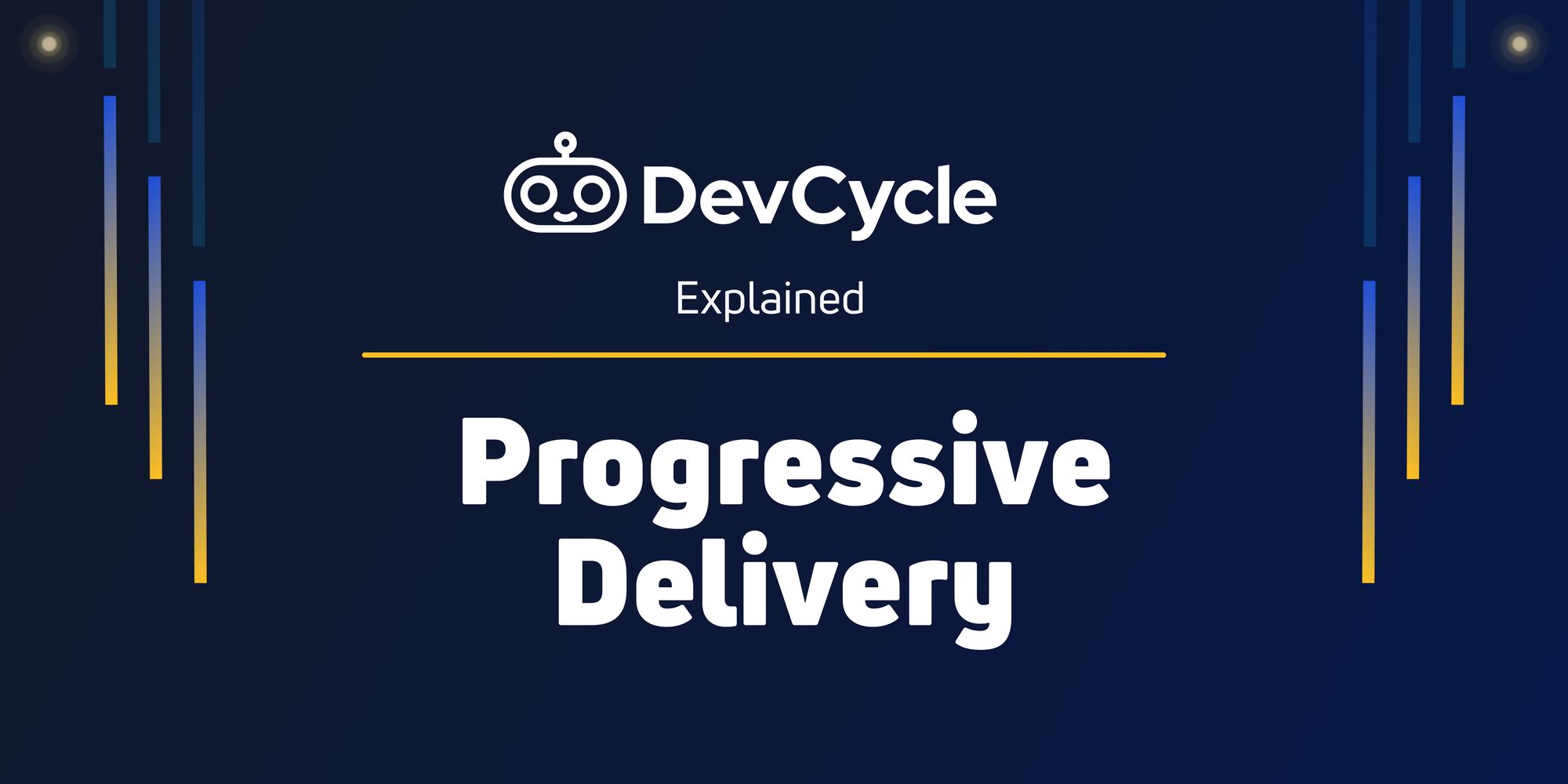How Feature Flags Enable Progressive Delivery
Progressive delivery is a modern software development process that builds upon the principles of continuous integration and continuous delivery.

What is Progressive Delivery?
Progressive delivery is a modern software development process that builds upon the principles of continuous integration and continuous delivery. It is the practice of delivering new features to only a subset of users first, observing the outcome of the changes, and then releasing to progressively more users if everything works as expected.
Organizations that use this method are able to ship new code faster, reduce risk, and continuously improve customer experience. Progressive delivery is an essential component of DevOps, and feature management is the primary way it works.
One of the biggest benefits of progressive delivery is that it provides you with many safeguards and control levers to help you safely pursue CI/CD. It does this by creating a progressive delivery system. This system mitigates risk in your release process, so if you're using CI/CD, you can start pushing code to production safely.
How Does Progressive Delivery Help DevOps Teams?
Applications and their code can be improved in three major ways: faster deployment, stability of the system, and better collaboration between teams. DevOps principles and practices can help in all three areas. Progressive delivery helps development teams deploy code to production faster without compromising the stability of the system, because it provides safeguards and control levers.
Technology is constantly changing, and if you're looking to provide your developers with the latest tools to make your organization more efficient, progressive delivery may be the answer. As a part of their DevOps transformation, many organizations are adopting modern software engineering systems like Kubernetes and microservices. Thus, progressive delivery implementation in these environments is crucial for success.
Progressive delivery is the perfect solution for all companies. It is versatile and can be used by risk-averse enterprises to deploy infrequently, or by startups that need releases to be more regular. It also works for everyone in between. Progressive delivery gives you speed and flexibility and allows you to release whenever and to whomever, giving your customers a better experience and creating a better bottom line.
How Do Feature Flags Enable Progressive Delivery?
It's important for teams to be able to quickly and safely make changes to their software. Requiring the use of a new system or programming method can make a team hesitant. Luckily, developers can now use a feature management tool to safely perform progressive delivery without having to spin up multiple production instances of their app.
Feature flags are a great way to be able to control what gets deployed when. The use of feature flags allows you to not have to change config files or perform rollbacks for new product features. Feature flags are a way to wrap new functionality in an application, then deploy it to just one production environment. These flags allow for the testing of new features without affecting the rest of your end-users.
A progressive delivery deployment strategy incorporates several software engineering best practices. Use cases for progressive delivery include running canary testing, blue-green deployments, multivariate feature flagging, and A/B testing. Whether you're an enterprise that needs to deploy new services infrequently or a startup that just wants the latest version of your new software as soon as possible, progressive delivery is a software development best practice.
If you’re testing your new feature, but the canary test fails, then you can use a kill switch to toggle the feature flag to the off position. If your monitoring, APM, or observability tool finds an issue while testing, DevCycle will disable the flag associated with it. If the canary test is successful, then you can continue to release the app to subsequent user segments. You can also choose to release the new version to a percentage of your user base.
A feature management platform like DevCycle is one of the tools for conducting safe, quick, and seamless canary launches. The term “canary launch” refers to the practice of rolling out new features incrementally, starting with just a small subset of your audience. This is just one type of progressive delivery technique, which ensures quality control so you are delivering better software and value to your customers quickly, without failure.

